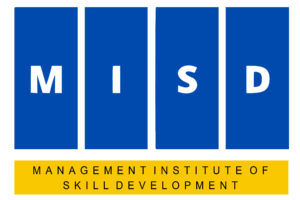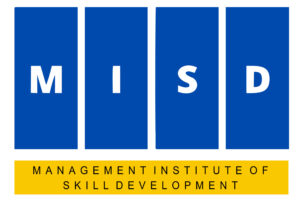Through the Web development industry, the key success factor is to represent available skills and requirements and get the desired job as a front-end developer or web designer. Your portfolio describes not just your projects but your expertness, creativity, and the competency of your problem-solving as well.
In this blog, we will explore the portfolio creating the perfect student, which will not only reflect your technical skills but also position you for the future of web development.
1. Why a Portfolio Matters for Web Developers
Regardless of whether you have been in the profession for long or have only just started, a portfolio is your gateway to career opportunities.
Demonstrates Practical Skills: Employers prefer to employ those candidates who can implement the knowledge of theoretical concepts in real-life projects since the latter often reveal a person’s character and talents better than a resume.
Showcases Creativity: It is through your portfolio that your ability to design creative and functional websites is presented.
Builds Credibility: A well-organized portfolio will convince others that you belong to the elite group of professionals in the constantly changing web development field.
2. Essential Elements of a Great Portfolio
First and foremost, here are the main parts that every web developer’s portfolio should contain:
a. About You
By having a little bit of an introduction about yourself and a compelling piece of writing about your background in web development and your career goals, you can increase your chances of getting a job. You can tell them if you are an expert in some areas such as front-end development, full-stack development, or UI-UX design.
b. Showcase Projects
Highlight 5-6 high-quality projects that demonstrate a range of skills, such as responsive design, animations, or API integration. Write a short description of each project, including: The goal of the project. Technologies used (e.g., HTML, CSS, JavaScript, React).Challenges faced and how you solved them. Use live links or demo videos to let potential employers interact with your work.
c. Responsive Design
Ensure your portfolio itself is mobile-friendly and adapts to different screen sizes. This is especially important if you’re applying for front-end developer roles.
d. Skills Section
Create a visually appealing skills section that lists technologies, programming languages, and frameworks you are proficient in. Include tools relevant to the future of web development, such as AI frameworks, cloud platforms, or Web3 technologies. Include tools relevant to future web development, like AI frameworks, cloud platforms, and Web3 technologies.
e. Contact Information
Give the clients or employers the easiest way to get in touch with you. Include links to your LinkedIn, GitHub, or personal blog, along with an email address.
3. Tips for Building a Strong Web Development Portfolio
a. Start with Personal Projects
If you’re new to web development, start with personal projects that are clear and feature your skills. Here are the projects you might want to try: A portfolio website (meta, right?).
A blog platform
.A weather app using APIs. An e-commerce mockup with payment integration.
b. Highlight Soft and Technical Skills
Clarify not only what you built but also how you thought and executed things, inter-operated with others, and employed new methods. This will also show the employer how you organize your work.
c. Leverage Modern Design Trends
To make sure your portfolio is future-ready, employ modern web design and development trends, such as:
Clean and neat layouts.
Integration of dark mode, so that you can read with ease and stay away from eye fatigue.
Adding Micro-interactions for better UX, which allows you to connect with the computer and make it assist you properly.
d. Use GitHub to Your Advantage
By attaching links to your GitHub repositories for each project, you can ensure that they are well-documented and easy to navigate. This exemplifies coding skills, version control skills, and is clear yet simple.
e. Keep It Updated
While you are gaining knowledge, keep on updating your portfolio with new projects and skills. Be observant and keep yourself up to date with the correct trends to indicate your ability to adapt to the changing world of web development.
4. Tools and Platforms to Build Your Portfolio
a. Portfolio Builders WordPress: User-friendly, with the ability to customize for beginners. Web flow: Great for providing visually interesting and attractive designs. GitHub Pages: Keep your portfolio hosted free of cost by them.
b. Design Tools Tools like Figma or Adobe XD can be utilized in the construction of wireframes or prototypes for presentation to the audience.
c. Front-End Frame works You can use frameworks like Bootstrap, Tailwind CSS, or React to construct dynamic, responsive websites for your portfolio.
d. AI-Powered Tools Implementation of AI technology will give your portfolio a new experience with such upgraded features as chatbots, automatically responsive design, and intelligent suggestions for designs.
5. Future Trends to Incorporate in Your Portfolio
As web development keeps on changing, so should your portfolio if you want to be prepared for the future.
Trends from your future portfolio could be: Web3 and Blockchain: Let the audience know the projects made on decentralized platforms.
AI and Machin Learning: Practical usage of AI tools such as chatbots or recommendation systems will impress.
Accessibility: Show off your expertise in inclusive design for users with disabilities. Progressive Web Apps (PWAs): Part of the programming function that PWAs provide.
6. Mistakes to Avoid
Too Many Projects: Again, quantity over quality is not a good idea. It is always better to have a few stronger and polished projects than a dozen projects you haven’t finished yet.
Outdated Designs: Make sure that your portfolio fits the current trends and standards in the front-end development.
Poor Navigation: A good user experience includes all the necessary menus, and also brief project descriptions.
Broken Links: You can check if the links are working correctly. And make sure that they direct me to live projects or their demos.
Conclusion
A portfolio website is a place where you set up your personal brand on the internet and display what you can do in technical skills, creativity, and what you are going and going to do in the future. Whether you’re an aspiring front-end developer or an experienced programmer, a strong portfolio can open doors to exciting opportunities.
While doing projects that that contain a high level of quality, bring together the most cutting-edge design trends and ensure a frictionless user experience, you will definitely appear a step-up in the hinterland that web development is. Therefore, start building or revamping your portfolio today, and you will be amazed by its ability to connect you with the perfect job for you!
Do you really think that a portfolio is the best way to demonstrate your skills? Which pro tips make you feel the rush of creativity in the web development process? If you imagine technologies getting out of the way and designs becoming the center of users’ way of interaction, describe a case where your design thinking had a profound positive impact. In these contexts, what type of software and web applications do you create and what is your role in them? Where do you see yourself in the IT job market in the future?

